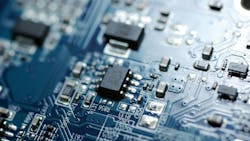Hardware-agnostic AI: Creating an open market for industrial automation
What you’ll learn:
- The industrial challenges that require AI as a solution are inherently complex.
- Robotics solutions that use standards that are common skills in the workforce lower implementation and customization costs.
- Open-architecture AI solution architectures based on standardized technologies allow any hardware to be used based on application needs and project cost limitations.
- Robotics should be democratized. AI solutions must be customized, enhanced, and programmed without expensive specialists or extensive retraining on proprietary systems.
When making purchasing decisions on proprietary solutions, vendor lock-in is always a risk. Requiring specific hardware to match the software means businesses become tied to a single vendor, creating downtime risks if supply chain issues arise.
The industrial challenges that require AI as a solution are inherently complex; if they weren’t, they could be handled through the automation solutions familiar to industrial processes for decades. These complexities drive up costs and create critical failure points in processes.
Episode 5 of (R)Evolutionizing Manufacturing: More of the Art of the Practical
For industrial AI solutions to make business sense, decision-makers need to know the system can be maintained onsite and not have to rely on access to rare specialists. Proprietary solutions have a limited pool of specialized experts, which can cause delays in support and customization when a company needs to innovate or integrate different hardware as requirements change.
Robotics solutions that use standards that are common skills in the workforce lower implementation and customization costs. An open-architecture design reduces sourcing risks, allowing companies to adopt the best tools for their needs without being confined to one vendor's ecosystem or reliant on a single supply chain.
Pick-and-pack: A case study in complexity
Robotic pick-and-pack systems offer a poignant example of process complexity. Behind the scenes, millions of workers support our modern e-commerce lifestyle. Most shipping orders are picked and packed by human hands, representing substantial operating costs.
What is your company doing about cybersecurity?
Over the next few years, labor scarcity will become a top business issue across all sectors. Picking is one of the most labor-intensive activities in warehousing and production processes. Robots are indispensable in many areas of industry but for some tasks, they are far too inflexible.
Because picking is a complex process, it has very low adoption of automation technology. This process complexity is coupled with an increasing demand to expand operations, with pick-and-pack throughput volume expected to increase 40% globally by 2030. As consumer demands and competition are increasing, the labor shortage continues.
See also: Developing the technology behind Kubota's cutting-edge tractors
Considering a rising wage environment, costs are expected to grow as well. Directly increasing throughput using existing staffed systems leads to safety risks and other challenges. Expanding total capacity at current throughput rates is expensive.
Robotic solutions allow both increased throughput and cost-efficient scaling. So, why aren’t more AI-driven robotic solutions being employed? Pick-and-pack systems require adaptive, accurate operations when dealing with “unknown” or unpredictable objects and cannot rely on traditional robotics deployments designed to repeat the same task.
These processes involve multiple variables and sophisticated AI models trained to deliver the necessary accuracy and quality control. Adopting these technologies has been hamstrung by the proliferation of proprietary solutions that require solution-specific expertise and hardware, driving up customization costs and creating single-source and downtime risks.
Allowing industries to maintain control over their operations, use affordable and widely available hardware and expertise, and to quickly scale as needed will encourage adoption and increase competitive advantage alongside efficiency.
See also: Research shows tech growth in manufacturing off to a fast start in 2025
To deploy new technology solutions in complex environments, decision-makers must know that technology options have reasonable costs and manageable risks. Unexpected customization costs, for example, can drive costs up and eliminate expected ROI.
Hardware choices must fit within project cost limitations and have reliable supply chains for maintenance and future operational scaling on demand. Software solutions should allow easy customization by any engineer, not specialized high-cost consultants with limited availability.
AI-driven robotic pick-and-pack systems will be essential over the next decade to increase efficiency, reduce costs and meet rising demand. To facilitate this evolution, modular, open-architecture AI systems that support hardware from multiple vendors are required to minimize risk.
Proprietary, closed systems slow the adoption of highly efficient robotic solutions powered by AI, and compartmentalize robotics and AI expertise, exacerbating the shortage of critical knowledge in the labor market.
Open-architecture solutions benefit vendors and end users
Open-architecture AI solution architectures based on standardized technologies allow any hardware to be used based on application needs and project cost limitations, ensuring that robotics solutions can be deployed as needed and scaled to meet demand.
See also: Lessons for CIOs on how AI is changing the customization game
Using “standardized technologies” means that open-architecture solutions should allow for application-specific customizations using existing IT and OT standards, commonly used programming languages and protocols for customization and visualization, and market-proven, commercially tested technology for data-sharing.
For example, a pre-trained perception-AI for robots must enable users to push the boundaries of their current use cases for automation development with standard software development languages and best practices.
Maintaining vendor-independent robot programming using industry standards, such as the Standard Robot Command Interface (SRCI) enables most engineers to create AI-driven robot solutions instead of relying on a limited number of specialists available for niche proprietary systems.
Hardware-agnostic solutions offer flexibility compared to solutions that are confined to the hardware offerings and supply chain of a single AI vendor. An open architecture for AI robotics enhances the entire ecosystem through broad adoption, creating a larger market and increasing profits for vendors while ensuring end-users have wider access to parts and expertise.
See also: Reliability teams need AI-ready digital blueprints now more than ever
Robotics should be democratized. AI solutions must be customized, enhanced, and programmed without expensive specialist consultants or extensive retraining on proprietary systems to be competitive in industrial environments.
“Black-box” systems lack transparency, hiding the underlying logic and making it difficult for end-users to understand malfunctions or optimize performance. Open-architecture, hardware-agnostic solutions allow for greater visibility and flexibility while offering hiring and sourcing flexibility that reduces cost and risk.
Once industrial adoption is widespread, cost savings, coupled with improved process efficiency, can drive lower prices, improve markets and the economy, and create better business environments for vendors and end-users alike.
About the Author

Eugen Solowjow
Based in Berkeley, California, Eugen Solowjow is R&D manager, AI and robotics, at Siemens. He leads a team of research scientists, tech leads, engineers, and project/product managers to drive customer-centric innovation in AI, robotics, data and autonomy.
